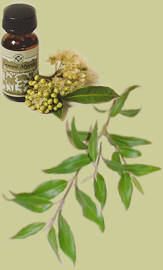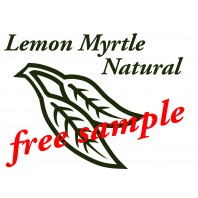- Gift Vouchers (0)
- New Products (65)
- Premium Personal & Body Care (30)
- Natural Skincare (0)
- Fragrance & Lifestyle (96)
- Aromatherapy (66)
- Eco Homecare (36)
- Healthy Home (118)
- For Pet Lovers (32)
- For Garden Lovers (9)
- For The Ethical Gourmet (62)
- For Tea Lovers - The Tea Flavour Specialists (57)
- The Aussie Pantry Tastes of Australia (71)
- Other Great Australians (31)
- All Lemon Myrtle Packs & Gift Ideas (74)
- All Lemon Myrtle Products (144)
FREE SHIPPING*
on orders over $120
BackThe Lemon Myrtle Story
Amidst the growing awareness of the value of Australian native rainforest plants, Lemon Myrtle stands out for the rarity of its fresh fragrance, and its medicinal and germicidal properties.
Lemon Myrtle is a rainforest plant grown organically in rich sub-tropical plantations on the east coast of Australia. For centuries, indigenous people fo the sub-tropics have used rainforest remedies as part of their traditional medicines. Plant extracts are a source of many modern western remedies.
 What is Lemon Myrtle?
What is Lemon Myrtle?
 A native plant to Australia, Lemon Myrtle has been used as a bush food and natural remedy for centuries. Now the value of Lemon Myrtle is being rediscovered and it is being cultivated in its native New South Wales to be used as an exciting new essential oil and bodycare ingredient.
A native plant to Australia, Lemon Myrtle has been used as a bush food and natural remedy for centuries. Now the value of Lemon Myrtle is being rediscovered and it is being cultivated in its native New South Wales to be used as an exciting new essential oil and bodycare ingredient.
The existence of the Lemon Myrtle tree was known as far back as 1853, when it was given the botanical name Backhousia Citriodora after the English botanist, James Backhouse. The high citral content of the oil extracted from the leaf - 90% to 97% - was ascertained some 100 years ago, but it is only now that its commercial potential is being realised.
 The Science
The Science
 The first thing you notice about Lemon Myrtle is its exquisite citrus aroma, but there is much more to Lemon Myrtle than its fragrance. Lemon Myrtle has some very special properties that have been investigated by scientists at Charles Sturt University in New South Wales.
The first thing you notice about Lemon Myrtle is its exquisite citrus aroma, but there is much more to Lemon Myrtle than its fragrance. Lemon Myrtle has some very special properties that have been investigated by scientists at Charles Sturt University in New South Wales.
The essential oil distilled from the leaf has strong anti-bacterial and anti-fungal properties. The Rideal-Walker test assesses the anti-microbial activity of a plant by examining the phenol co-efficient of a number of essential oil components such as citral, using bacteria salmonella typhii as a test organism. The test (in which the higher scores are best) awards Lemon Myrtle oil a co-efficient rating of 16, Tea tree a score of 11, while Eucalyptus citriodora scores 8.
Further research at Charles Sturt University, and as reported on Burkes Backyard (April 2000), found that Lemon Myrtle (Backhousia citriodora) has very good antibacterial and antifungal activity. In fact, studies suggest that backhousia oil has better anti-bacterial and anti-fungal properties than the better-known Tea tree (Melaleuca alternantheria). In tests, its anti-microbial activity was proven to be 30% higher than Tea Tree oil.



